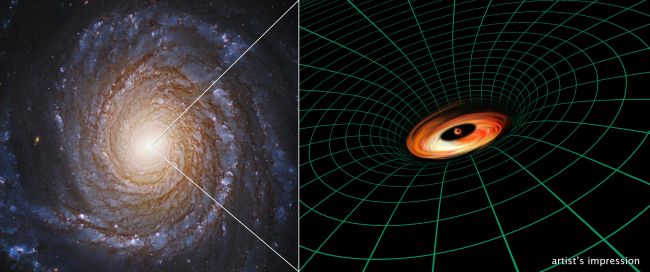Strange things are happening in dark corners of the universe.
Astronomers have been tracking bright jets of high-energy particles that periodically wriggle their way through the universe and into sensors here on Earth. The Kepler space telescope picked up the latest such flare in 2011. Ever since then, scientists have been stumped.
Years ago, scientists proposed that the flares could be caused by a strange, amorphous celestial object—two supermassive black holes, trapped in two different galaxies, circling each other. They playfully named the cosmic object “Spikey.”
As supermassive black holes scoot closer and closer to each other, they begin to gobble up bits of dust and gas and belch particles out into space. These high-energy flares, which can be picked up from telescopes orbiting Earth, suggest the supermassive black holes really are on a collision course. But astronomers aren’t holding their breath. They expect the meeting won’t happen for another 100,000 years—an astronomical blink of the eye.
Scientists clued in on the interstellar dustup thanks to a theory proposed in 2017 by two Harvard astrophysicists. They suggested that such a cosmic meeting might be visible thanks to gravitational lensing, when light traveling toward a hypothetical merger bends and warps around the feature, sending out a bright jet of high-energy particles. “It’s a very distinctive signature,” Harvard’s Rosanne Di Stefano told Scientific American, which first reported on the story. Unfortunately, the flares are largely unpredictable.
Read more: Popular Mechanics



































